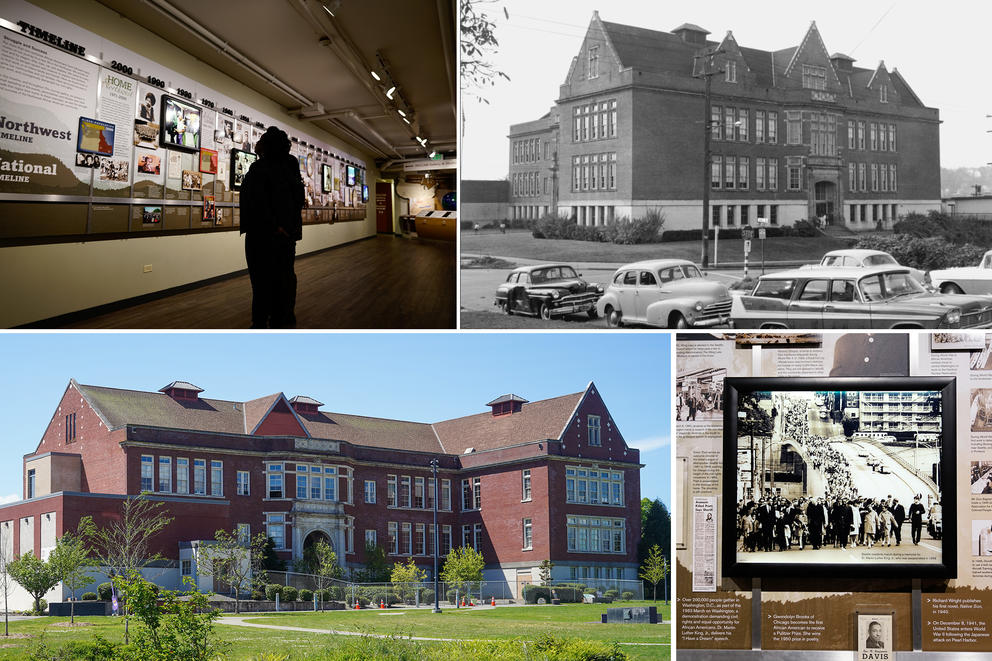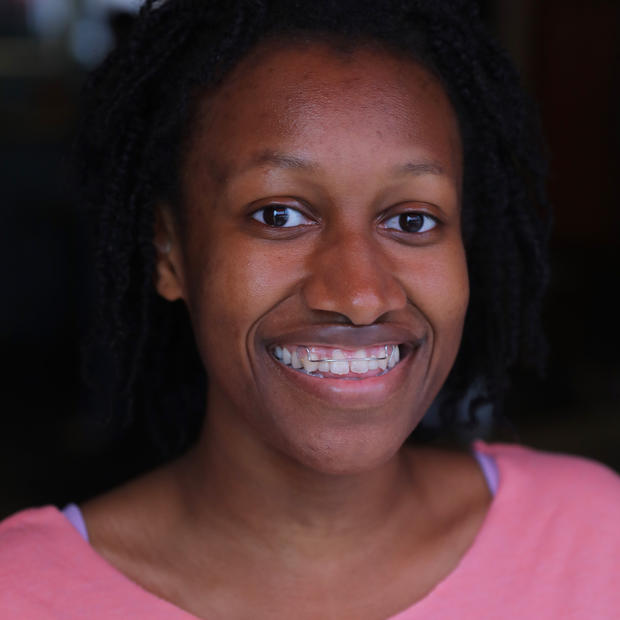Podcast | A history of many hopes at the NW African American Museum
The Central District institution has a complicated backstory and an important role to play for Seattle's Black arts community.

Top right: The Colman School building, which was built in 1910, would later be home to the Northwest African American Museum. (Seattle Pubic School Archives, PH 212-49) Bottom right: A framed photo depicts a 1968 memorial march in Seattle following the assassination of Dr. Martin Luther King. The photo is part of the "Our Journey'' exhibit at NAAM, a permanent exhibit chronicling African American history in Washington, Oregon, Idaho, and Montana over the past three centuries. Bottom left: The Urban League Village, which houses apartments and NAAM. Top-left: Guests at NAAM view the timeline in the "Our Journey '' exhibition. (Chloe Collyer for Crosscut)
The historic Colman School building at 23rd and Massachusetts in Seattle’s Central District has lived many lives. It has been a school, the site of the longest occupation of a public building in U.S. history and the African American Heritage Museum and Cultural Center. And since 2008, it has been home to 36 housing units and the Northwest African American Museum.
Today, the Colman Building is owned and operated by the Urban League of Metropolitan Seattle, with the Northwest African American Museum as a first-floor tenant. And, since it was decades of activism and passion in the making, the museum holds many hopes.
Subscribe to the Black Arts Legacies podcast on Apple Podcasts, Spotify, Stitcher or Google Play.
NAAM is a site of dreams fulfilled and dreams deferred. A lot of that comes from so many people wanting this space to be the very best it can be.
For this episode of the Black Arts Legacies podcast, host Brooklyn Jamerson-Flowers examines some of NAAM’s controversial history, while also talking with some of those involved in bringing the museum to life, as well as artists with ties to it. There’s a lot to untangle along the way, but those who invested in the space or have been uplifted by it insist that the Northwest African American Museum deserves its due.
Check out the rest of the Black Arts Legacies project, including artist profiles, photography and videos.


